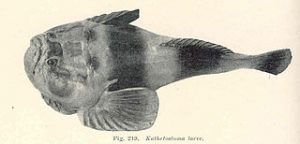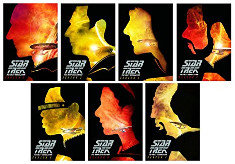Someone looking at stars
The primary definition of Stargazer is: Someone who looks at the Stars, although it now includes all sorts of celestial objects including constellations, planets, dwarf planets, moons, asteroids, comets, quasars, galaxies. Pretty much anything one can see with the naked eye.
An amateur astronomer is also often referenced as a stargazer even though they generally will look at the sky using a telescope or at least binoculars.
Well known stargazers are Astrologers and Astronomers.
Stargazer
Lockheed created a large plane: the L-1011 TriStar aircraft built in 1974.
In 1994, it was modified to be used by Orbital Sciences (now Orbital ATK) and launch Pegasus rockets. As if 2012, it sent 35 Pegasus rockets (nearly two a year).
Before June 1994, NASA used a Boeing NB-52B Balls 8 to launch Pegasus rockets. NASA continued to use their Boeing as an additional four rockets were planned to be fired but the Stargazer was not configured to support those old models.
The plane was also used for research flights and carrying the X-34 hypersonic research aircraft. The plane can carry a payload of 23 tons to an altitude of 12,800 meters.
An interesting aspect is that the plane has been flown from outside the United States on multiple occasions. It visited the Marshall Islands and Spain.
On December 12, 2016 it was going to launch the Cyclone Global Navigation Satellite System (CYGNSS), a system developed by the University of Michigan, hoping that we can enhance our hurricane forecasting. It cost $152 million. The first launch attempt was cancel after we detected some problems with the hydraulics system that could prevent Stargazer from properly releasing the rocket. It was finally launched on the 15th.
Star Gazers
In 1976, Jack Horkheimer, from the Miami Museum of Science, where he took care of the State Transit Planetarium, started hosting a show on the Public Broadcasting Service (PBS) talking about Astronomy for five minutes every week. Jack had been on various News Shows to talk about Astronomy since 1970.
PBS first offered Jack to make a series of 30 min. shows about astronomy titled Horkheimer’s Heavens. This is when Jack Horkheimer: Star Hustler was created as Jack asked to have a more permanent 5 min. show about Astronomy as a condition to do the series required by PBS.
The 5 min. show talks about featured celestial objects that one can see with a naked eye over the current week. These objects include planets, the moon, including lunar and solar eclipses, comets, stars, constellations, conjunctions (when an alignment of two or more bodies happen, such as the New Moon).
The show also talks about the history of astronomy and the science behind celestial objects. In other words, it can be viewed as a scientific show. Actually, for the first nine years, Jack would be hosting what one could say was a very serious show. He relaxed his character later making his show accessible to a larger audience. This is because PBS decided that in May 1985 the show would go national and thus had to be targeted to a broad audience rather than just astronomers. In 1989, it became international. Now, if you want to go one step further and see more than what can be seen by the naked eye, my website here will help you with that. Just check My Blog for more posts on how to reach the full status of an Astronomy Junkie!
Anecdote: In 1997, the name of the show was changed from Jack Horkheimer: Star Hustler to Jack Horkheimer: Star Gazers because when the Hustler adult magazine appears on the Internet, it took over that search term. The PBS producers decided that it was not worth the potential trouble and decided the change the name to avert possible confusions.
When Jack died on August 20, 2010, the format of the show remained the same for one year, including the music and the introduction that features Jack’s picture. In 2011 the name of the show became just Star Gazers.
The show is still broadcasted on PBS and is also available to astronomy clubs and educational institutions for free. The episodes are still being sent by satellite about two weeks before the beginning of the following month.
Bony Fishes
 Marine bony fishes are called Stargazer because their eyes are on top of their head and it is like they are always looking at the stars. At least, they are always looking up for their preys.
Marine bony fishes are called Stargazer because their eyes are on top of their head and it is like they are always looking at the stars. At least, they are always looking up for their preys.
The head of these bony fish look very blocky or conical, which is somewhat unusual for a fish.
There are two families of bony fish called Stargazer: Uranoscopidae and Dactyloscopidae.
Lilium “Stargazer”

A Lilium “Stargazer” is a hybrid lily flower. The species Latin name is Lilium Orientalis. These lilies bloom in mid-to-late summer and have a wonderful fragrant perfume. They like loose soil, grow fast and prefer to be directly in the Sun.
(Click picture to enlarge)
These flowers were actually created by Leslie Woodriff in 1974, California. Leslie, born in 1910, was a master at lilies and hybridizing. He died in Feb 13, 1997 not without fame since in 1990 a flower was named Woodriff in his honor.
His new breed was not pointing downward like other lilies, instead they were facing up. This is why he chose to call them Stargazer.
Florists have reported that pretty much all consumers like the appearance of the Stargazer. However, a few do not like the fragrance. Not only that, the fragrance oils can cause headaches, nausea, nasal congestion, breathing difficulties. So it is not always easy to sell such flowers.
WARNING: The ASPCA reported that the flower is actually toxic to cats. So if you have cats, please avoid the flower. The effects on cats are rather violent (vomit, inappetence [lack of appetite], lethargy, kidney failure, death) so please take this warning seriously. This happens when the cat eats part of the lily (it’s not limited to the Stargazers!) You could attempt to have lilies out of your cats reach, but that’s still dangerous.
Star Gazers’ Stone
As the Colonial America was being built, there were all sorts of problems between States. The South of Pennsylvania, a border disputed with Maryland, Virginia, and Delaware required a couple of surveyors to make observations in order to resolve the problem. Charles Mason and Jeremiah Dixon were sent there between 1763 and 1767.
This is why we have a line in the South of Pennsylvania and between Maryland and Delaware called the Mason-Dixon line. To the South of Pennsylvania, the line was going along Virginia until 1863 when West Virginia was split from Virginia.

Because of the required work, the expedition used an observatory which they marked with a stone. Location which is called Star Gazers’ Stone. They worked on determining the exact latitude of the stone over the duration of their survey. They came back to the house next to the stone over the winter time. That stone has been preserved and is on a farm land off of Star Gazer Road, Coatesville, Pennsylvania. Note that the Stone is now on public land, owned by Natural Lands Trust, and can be a destination for travelers interested in seeing the stone.
Note: As we can see on this picture, there is now a wall around the Star Gazers’ Stone (i.e. the Stone is the one in the center of the image). That wall was erected in 1956 to clearly mark the location and protect the Star Gazers’ Stone that is recognized by the land conversation organization. The wall includes a plaque.
The problem arose in 1681 when Charles II defined the Southern line of Pennsylvania as the 40th parallel, which would match the Northern limit of Maryland one to one. Only the old limit that was defined in 1632 did not actually match the new limit of 1681.
Various diplomatic settlements were attempted but the feud were not all resolved and they became more and more violent until the Cresap’s War 1730 and 1738. The agreement of 1732 included a clause that surveyors would be used to define the line with high precision. Only it took some time to get the survey done.
In order to properly mark the line, Charles & Jeremiah were asked to do their survey by the Penns & Calverts using various methods, one of them was astronomical observations to determine the exact location of the Star Gazers’ Stone. Among their measurement instruments was a telescope called the Zenith Sector. It was so called because it was used to point at the zenith. These telescopes are used to measure the position of stars and thus gives us a way to determine what we call Astronomic Latitude. Zenith telescopes were in use until the 1980s to track the position of the North pole. We now use radio astronomical quasar which gives us a much higher precision. The latest Zenith telescope used liquid mirrors which meant that they had to point straight up.
In order to measure the longitude, they used a high quality chronometer (we often call those stopwatch now a day.) Since the Latitude was the most important part of their expedition, Mason used the Moon to compute the longitude and although the chronometer he used was high quality it was not the best available at the time.
The final Mason-Dixon between Pennsylvania and Maryland uses a set of segments defined between 39°43′15″ N and 39°43′23″ N (which is around 39.72°, so somewhat further South than the 40th parallel, so quite a be more South than what was considered the Northern part of Maryland at first.) It pretty much looks straight on a map, but it is not quite the case on the land. They also surveyed the arc at the Northern part of Delaware, where the final territory resolutions did not happen until 1921.
The surveyors used Iroquois guides to help doing the survey of 233 miles. This is why their line stops short of the Pennsylvania and Virginia western most borders. That Western part was still Lenape territory. Lenape and Iroquois were having hostilities at the time and the Iroquois did not want to pick up a fight. It was only in 1784 that the survey was picked up again, this time by David Rittenhouse and Andrew Ellicott.
Since then, the Mason-Dixon line was resurveyed again in 1849, 1900, and 1960.
USS Stargazer
The USS Stargazer was the first ship that Jean-Luc Picard had under his command.
The ship was abandoned following the Battle of Maxia.

It was later recovered by the Ferengi, DaiMon Bok who intends to use the ship to take revenge upon the Enterprise captain. This happens in the Ninth Episode of Season One. The timeline is the 24th century.
The Ferengi get transported aboard the Enterprise when the USS Stargazer approaches. This is when DaiMon Bok offers the ship as a gift captain Jean-Luc Picard.
Picard explains how he asked his crew at the time to do a small warp jump allowing the ship to appear in two places at once allowing him to win the battle of Maxia even though the ship was already badly damaged. Later that action was called The Picard Maneuver.
The ship still has a chest with various belongings that Picards wants to transport back to the Enterprise. Inside is an orb that the Ferengi placed there to take over Picards by glowing brightly. The orb is linked to the Ferengi ship.
The orb is used by DaiMon Bok to force Picard to transport back to the Stargazer where DaiMon Bok is waiting. There he explains that the ship Picard won over was actually run by his son and he’s here to seek his revenge. This is when Picard relives the Battle of Maxia. Only the enemy ship is now the Enterprise!
Picard starts The Picard Maneuver, but expecting as much Riker and Data had a counter and are able to use the tractor beam instead of a laser fight. Finally, Riker is able to communicate with Picard who fires at the orb which explodes breaking the link. Picard returns to the Enterprise.
DaiMon Bok lost this battle and gets relieved of command since a Ferengi cannot engage in an unprofitable venture of such wingspan and lose.

Leave a Reply